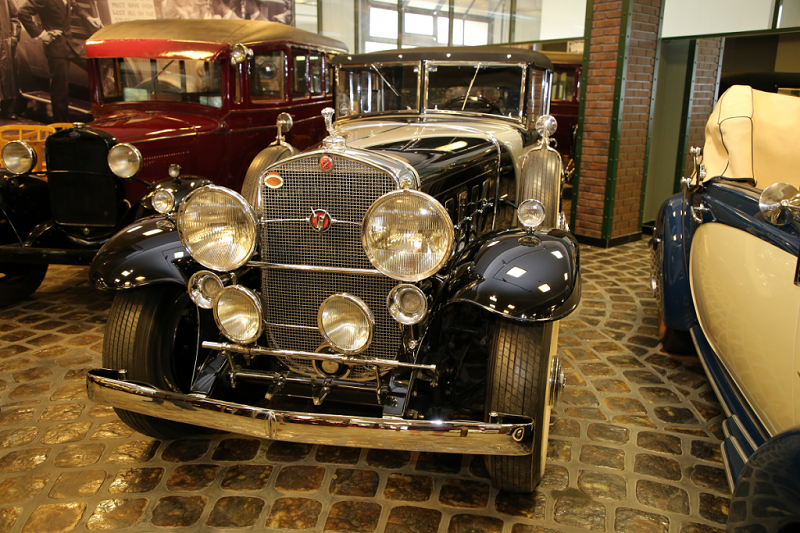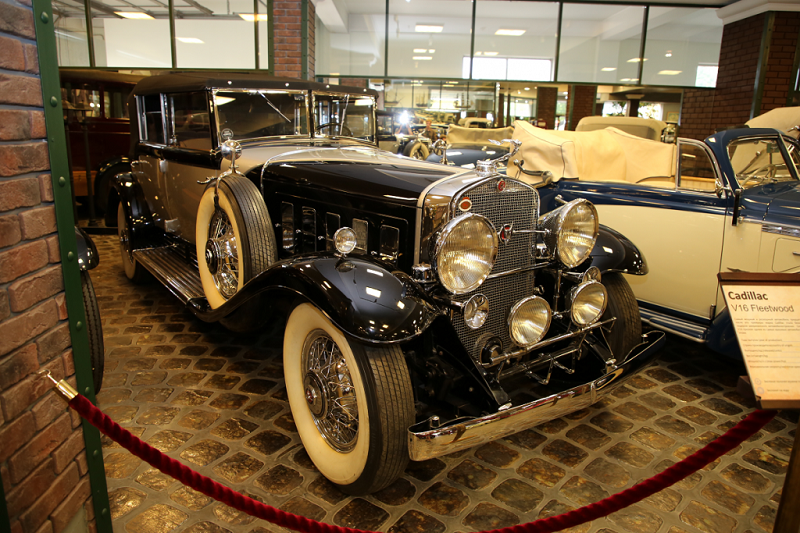The 16-cylinder Cadillac Fleetwood is the most powerful and luxurious car of the United States of the 1930s. Today many experts call it “the most beautiful car in the US before the war.”
Vadim Zadorozhny’s Museum of Equipment, Moscow
Years of production: 1930-1937
Country of origin: USA
Issued: 3867 items
Weight: 2383 kg
Power: 185 hp
Speed: 160 km / h
The Cadillac V-16 (also known as the Cadillac Sixteen) was Cadillac’s top-of-the-line model from its January 1930 launch until 1940. The V16 powered car was a first in the United States, both extremely expensive and exclusive, with every chassis being custom-finished to order.
Only 4,076 were constructed in its 11-year run, with the majority built in its debut year before the Great Depression took strong hold. The onset of World War II reduced the sales, resulting in its demise. It was, however, at least thrice cheaper than Bugatti Royale (6 made).
The Cadillac V-16 was distinguished by its pioneering V-16 engine, a narrow 45° V angle OHV Series 452 displacing 452 cu in (7.4 L).
Upon its introduction the new car attracted rave reviews from the press and huge public attention. January production averaged a couple of cars per day, then ramped up to twenty-two. By April, 1,000 units had been built, and by June, 2,000 cars. These could be ordered with a wide variety of bodywork. The Fleetwood catalog for the 1930 V-16 included 10 basic body styles; there was also an envelope containing some 30 additional designer’s drawings. Research by the Cadillac-La Salle Club, Inc. puts at 70 the number of different job/style numbers built by Fisher and Fleetwood on the Sixteen chassis.
Beginning in June 1930, five new V-16s participated in a promotional tour of major European cities including Paris, Antwerp, Brussels, Amsterdam, Utrecht, Copenhagen, Stockholm, Berlin, Madrid, Barcelona, Moscow, Saint Petersburg, Belgrade, Cologne, Dresden, Frankfurt, Hamburg, Munich, Nuremberg, Vienna (where they won prizes), Bern, Geneva, Lausanne, Zürich, Madrid, San Sebastian, La Baule and Angers. On the return journey from Spain, the V16 caravan stopped also in the town of Cadillac, in south-western France, although that city bears no relationship to the marque, other than its name.
After the peak in V-16 orders in mid-1930, production fell precipitously. During October 1930, only 54 cars were built. The lowest figures for the 452/452A cars of 1930–31 were August 1931 (seven units) and November 1931 (six units). Minimum production continued throughout the rest of the decade with a mere 50 units being built both in 1935 and in 1937. 1940 was only marginally better with a total of 51 units. Not surprisingly, Cadillac later estimated that they lost money on every single V-16 they sold. The 1930 Town Brougham was listed at US$9,200 ($161,165 in 2022 dollars).
Production of the original V-16 continued under various model names through 1937. The body was redesigned in 1933 as the model 452C. Innovations included Fisher no draft individually controlled ventilation (I.C.V. or vent windows).
For 1934, the body was redesigned again and denoted as 452D, and as 452E in 1935. The V-16 now featured the Fisher Turret Top all-steel roof, though the cars were still built by Fleetwood. This same basic design would remain virtually unchanged through 1937. With a wheelbase of 154.0 inches (3,912 mm) and a curb weight of up to 6,600 pounds (3,000 kg) these are perhaps the largest standard production cars ever produced in the United States.
Combined production for the 1934 and 1935 model years was 150. It was redesignated the Series 90 in 1936 as Cadillac reorganized their model names. Fifty-two units were sold that year, with nearly half ordered as limousines. Hydraulic brakes were added for 1937, the last year of production. Fifty vehicles were produced.












